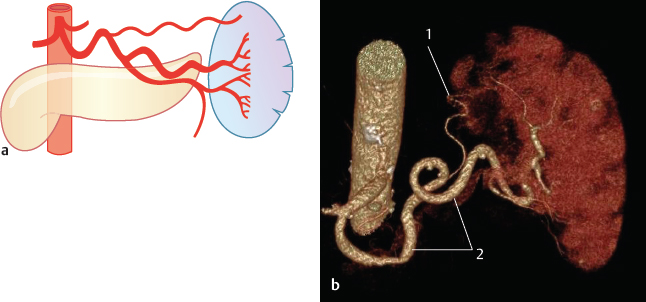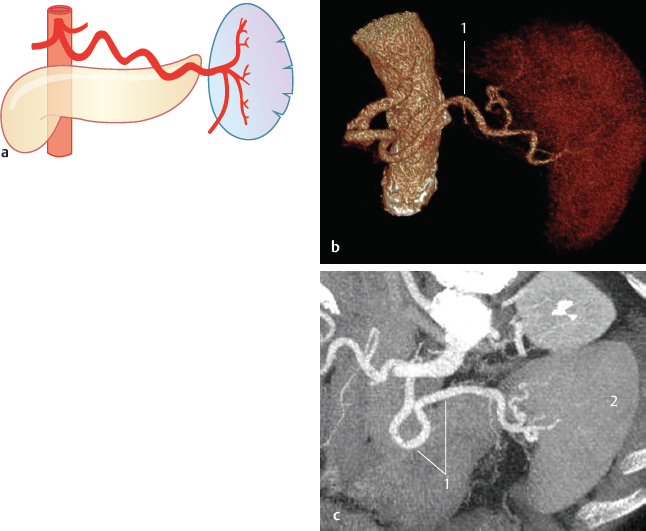16 Splenic Artery
K.I. Ringe, S. Meyer
Along the course of the splenic artery from the celiac trunk, usually its largest branch, four subdivisions are apparent: suprapancreatic, pancreatic, prepancreatic, and prehilar parts. The second segment, the pancreatic part, is suprapancreatic in approximately 90%, behind the pancreas in 8%, and in front of the pancreas in 2% of all cases. The splenic artery is characterized by a tortuosity which can equal a length of up to 50 cm, although the distance from the aorta to the spleen is only approximately 10 cm.1–9
The origin from the celiac trunk and its variability are shown in Chapter 13. In the majority of cases, the splenic artery divides into at least two main branches at some distance from the spleen—“distributed type”; the other alternative branches near to the splenic parenchyma—“magistral type.” Six to thirty-six individual arteries enter the spleen without major anastomoses within the spleen. These arteries supply the segment like parts of the spleen, and are of great clinical importance in partial splenectomies, which are preferred nowadays to a total splenectomy.4,5,10
16.1 Type of Branching

Fig. 16.1 Remote from the hilus (distributed type) (70%). Schematic (a), coronal VR CT (b), and axial MIP CT (c). 1 Splenic artery; 2 spleen; 3 pancreas.
Fig. 16.2 Near the hilus (magistral type) (30%). Schematic (a), coronal VR CT (b), and axial oblique MIP CT (c). 1 Splenic artery; 2 spleen.
16.2 Polar Arteries
Important branches of the splenic artery are the short gastric arteries and the left gastroepiploic artery (see gastric arteries, Chapter 17). Arteries to the cranial or caudal pole of the spleen originate from the main splenic artery or the superior or inferior terminal branches. In rare instances, the upper polar arteries arise from the aorta, the left gastric artery, a pancreatic artery, or even a mesenteric artery.2,11

Fig. 16.3 Upper polar artery (65%). Schematic (a) and coronal VR CT (b). 1 Upper polar artery; 2 splenic artery.
Stay updated, free articles. Join our Telegram channel

Full access? Get Clinical Tree









